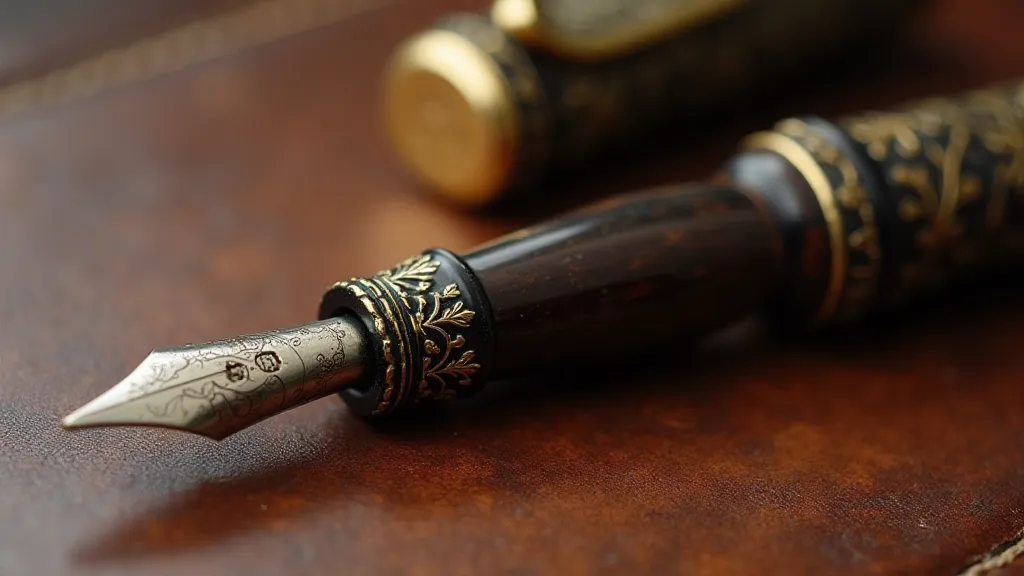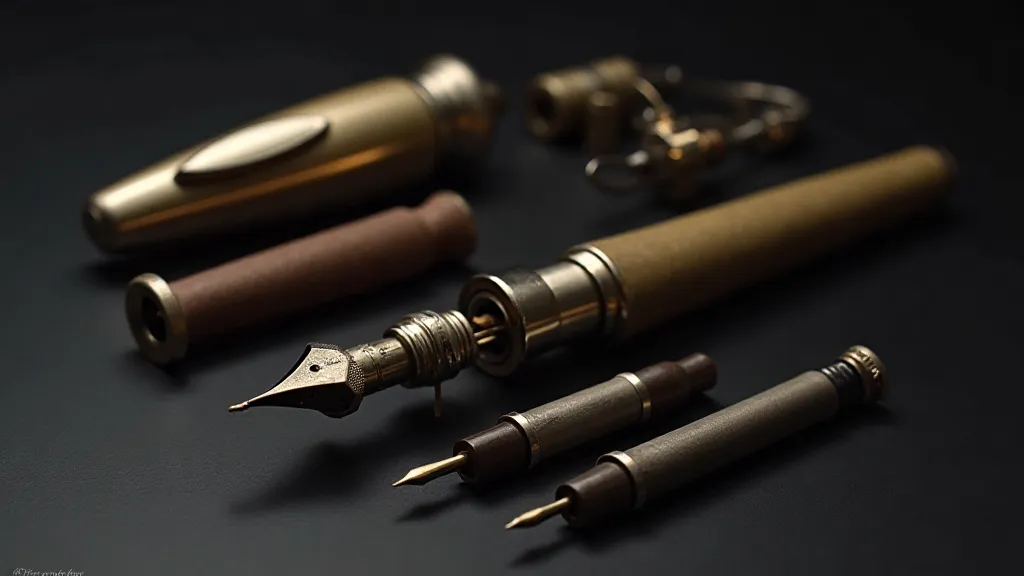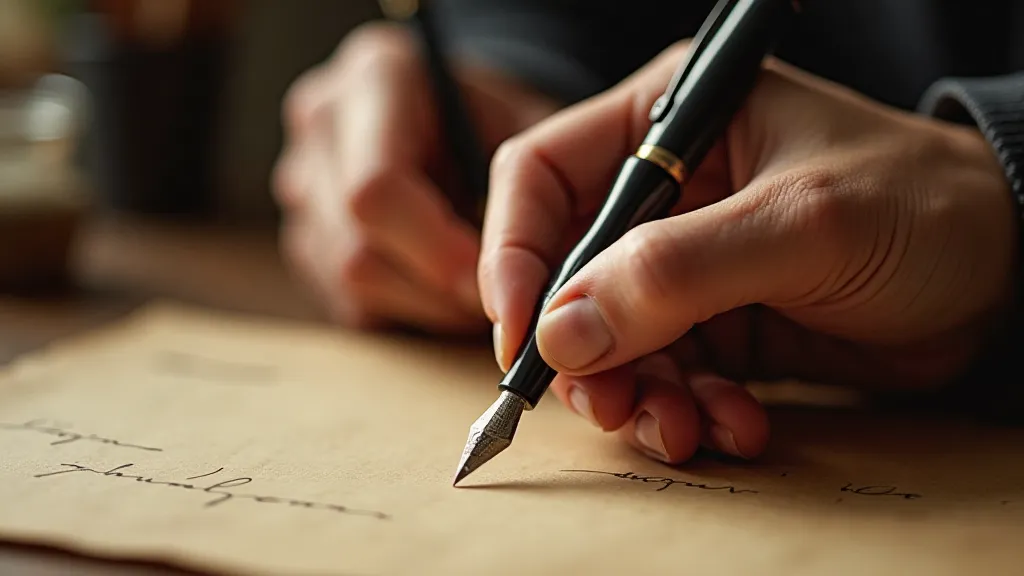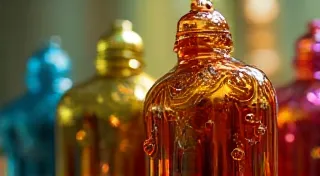Whispers From the Vault: Documenting Forgotten Pen Makers
The world of vintage pens is often dominated by the titans: Waterman, Parker, Sheaffer. Names synonymous with elegance, innovation, and a certain aspirational quality. But beyond these celebrated marques lie a constellation of smaller, often overlooked manufacturers – quiet artisans who poured their skill and passion into creating beautiful writing instruments, often leaving behind only fragmented records and intriguing mysteries for collectors to piece together. This series is dedicated to those forgotten voices, to unearthing the stories behind the pens that didn’t quite make the history books.
My own fascination began, predictably, with a Parker 51. A beautiful piece, certainly, but the uniformity of information surrounding it felt… sterile. Then I stumbled upon a pen bearing the name “Rollin & Eckstein.” Suddenly, the research rabbit hole yawned open. Rollin & Eckstein, based in New York City in the late 19th and early 20th centuries, produced pens of remarkable beauty and unusual design. Their catalogs, when you can find them, reveal a dedication to innovative filling mechanisms and a design aesthetic that felt distinctly different from the established norms. That first Rollin & Eckstein pen wasn’t my most valuable acquisition, but it was my gateway to appreciating the breadth and complexity of the vintage pen landscape.

The Rise and Fall of Small-Scale Pen Manufacturing
The late 19th and early 20th centuries were a golden age for small-scale manufacturing in America. Technological advancements, coupled with a burgeoning middle class eager to embrace new technologies and markers of status, fueled a boom in specialized industries. Pen manufacturing was no exception. Numerous companies, often family-owned, sprang up, each striving to carve out a niche in the burgeoning market. These weren’t faceless corporations; they were workshops filled with skilled craftsmen – jewelers, engravers, and mechanics – taking pride in their creations. They weren’t driven solely by profit; there was a genuine desire to produce something beautiful and functional, a testament to their skill and ingenuity. The challenges inherent in preserving these objects, and the ethical considerations involved in acquiring them, often lead collectors down pathways of research and reflection.
However, the landscape shifted dramatically. The rise of mass production, spearheaded by companies like Parker and Waterman, made it increasingly difficult for smaller manufacturers to compete. Lower prices and wider distribution squeezed their margins, and the lure of standardization and efficiency proved too strong for many. Slowly but surely, these smaller shops disappeared, swallowed by the relentless march of industrial progress. The pens they left behind, however, remain as poignant reminders of a bygone era – physical echoes of a time when craftsmanship and personal artistry were paramount. The passage of time itself leaves its mark; each pen carries the etching of time, with imperfections that can tell a story all their own. The entire process of collecting, restoring, and appreciating these pens can be viewed as a form of pen's penance, a way of acknowledging the history and sometimes complex origins of these objects.
A Profile: The Wilcox Pen Company
Let's consider the Wilcox Pen Company, based in Indianapolis, Indiana. While their pens aren’t as commonly encountered as, say, a Sheaffer, they represent a fascinating case study in innovation and adaptation. Founded in the 1890s, Wilcox initially produced lever-filling pens, but they quickly moved to develop a unique "Self-Filler" mechanism—a precursor to the later piston-filling pens. Their designs often featured a distinct Art Deco influence, with streamlined forms and geometric patterns. The level of detail in some of their pens, particularly those with inlaid gold accents and intricate engraving, is astonishing. They marketed their pens as a premium product, targeting professionals and those who valued both functionality and aesthetics. The journey of each pen, from the initial concept to the final product, is a story of creativity and determination.
The Wilcox story is particularly bittersweet. They appeared to be on a trajectory of success, adapting to changing market demands and consistently producing high-quality pens. Yet, in the 30s, seemingly out of nowhere, the company ceased production. The reasons remain unclear – economic pressures, a legal dispute, or perhaps a combination of factors – but the abrupt end left a significant void in the vintage pen world. Finding information about Wilcox is challenging; their advertising is sparse, and their catalogs are rare. It's a frustrating reality for collectors eager to learn more about this intriguing manufacturer. The process of piecing together the details of their existence often feels like excavating a lost civilization, uncovering fragments of a story that has been buried by time. Collectors who are drawn to these obscure brands often find themselves deep in research, trying to understand the forces that shaped their rise and fall.
Beyond the Names: Appreciating the Details
Collecting and appreciating these lesser-known vintage pens isn't solely about acquisition. It's about the journey – the research, the detective work, the quiet thrill of uncovering a piece of history. It's about learning to identify the subtle clues that distinguish one manufacturer from another. The materials used, the style of engraving, the design of the filling mechanism—each detail tells a story. A close inspection reveals the unique character of each pen, its individual quirks and imperfections. These imperfections aren't flaws; they are testaments to the human hand that created them. It’s within these subtle details that we sometimes find an almost alchemical quality – a merging of material, skill, and time, leaving behind chromaturgical residue of a bygone era. Understanding the subtleties of pen design and the nuances of historical manufacturing practices requires a keen eye and a passion for detail; it’s akin to appreciating the fine details in a vintage automobile or a meticulously crafted piece of furniture.

The Restorer's Perspective
For those interested in restoration, these forgotten pens often present unique challenges and rewards. Parts are scarce, and repair techniques may need to be adapted. However, the opportunity to breathe new life into a piece of history, to preserve a legacy that might otherwise be lost, is incredibly gratifying. Restoring a Rollin & Eckstein or a Wilcox pen is more than just fixing a writing instrument; it's an act of preservation—a way of honoring the skill and artistry of the original makers. It’s a way of ensuring that their whispers from the vault continue to be heard. The dedication and skill required to restore these vintage pens can be surprisingly extensive, often requiring a combination of mechanical aptitude, artistic sensitivity, and a deep understanding of historical materials and techniques.
The difficulty in finding replacement parts also necessitates a different approach to restoration. It’s less about replicating original components and more about creatively adapting available materials to function correctly. This often requires ingenuity and a willingness to experiment, traits that are essential for any aspiring vintage pen restorer. Sometimes, the moral implications of acquiring these rare instruments also come into play; a collector might wrestle with a pen's penance when considering the provenance and ethical sourcing of these valuable pieces. The entire experience offers a profound appreciation for the craftsmanship of a bygone era and the fragility of historical artifacts.
The Legacy Endures
The pens of Rollin & Eckstein, Wilcox, and countless other forgotten manufacturers may not be as famous as their more prominent contemporaries, but their legacy endures. They represent a vital part of the history of writing instruments – a reminder of a time when craftsmanship and personal artistry were valued above all else. They offer a glimpse into a world of smaller-scale manufacturing and a more intimate connection between maker and user. Their story is a testament to the ephemeral nature of success and the enduring power of artistry. The act of writing with these pens often provides a unique and evocative experience, connecting the user to the history and craftsmanship embedded within each instrument.

By shining a spotlight on these forgotten makers, we can help ensure that their stories are not lost to time. We can celebrate their ingenuity, appreciate their artistry, and preserve their legacy for generations to come. The journey of a pen, from its creation to its rediscovery by a collector, is often a complex and fascinating one, leaving behind a palpable sense of history and the echoes of countless hands. The next time you stumble across a pen bearing an unfamiliar name, take a moment to pause, to research, and to appreciate the history that lies within. You might just uncover a whisper from the vault, a story waiting to be told. The very act of writing with these pens feels different, imbued with a tangible connection to the past and the skill of the long-gone artisan. Exploring the nuances of these pens can be a wonderfully rewarding pursuit, offering a window into a lost world of craftsmanship and innovation, and offering a unique connection to the past.





